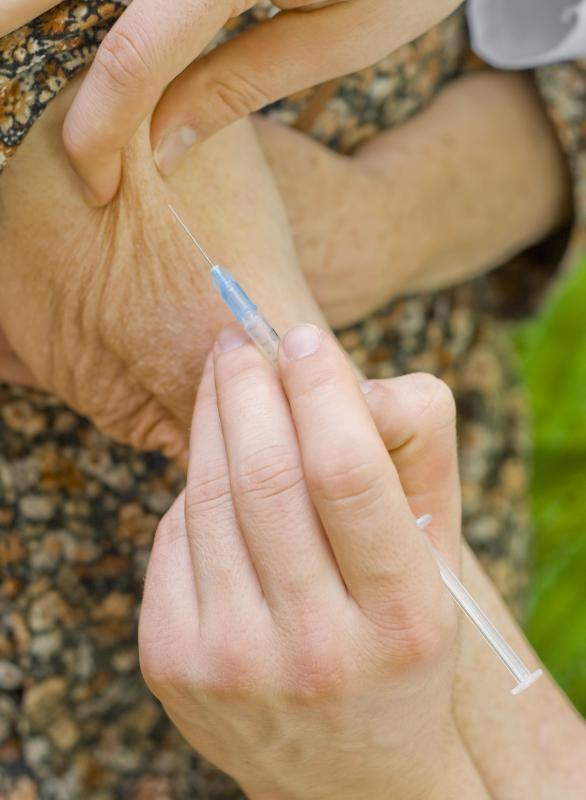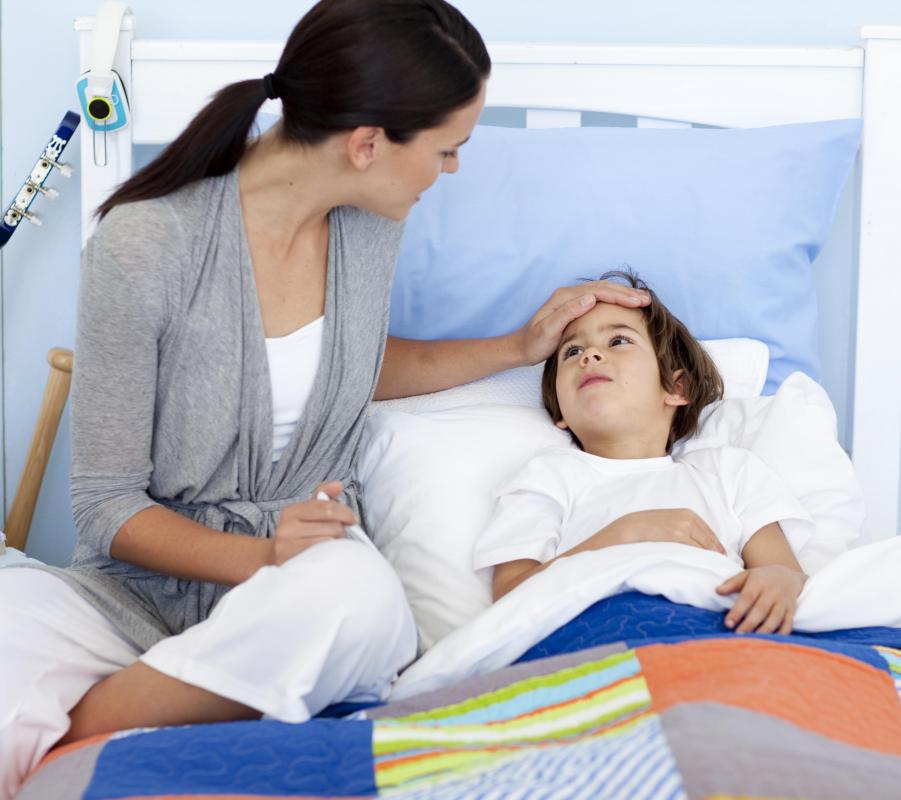At AllThingsNature, we're committed to delivering accurate, trustworthy information. Our expert-authored content is rigorously fact-checked and sourced from credible authorities. Discover how we uphold the highest standards in providing you with reliable knowledge.
What Are the Most Common Parrot Diseases?
There are several diseases that can affect a parrot, with some of them having the ability to be passed to humans. Some of the most common parrot diseases include polyoma, psittacine beak and feather disease, and chlamydia psittaci. Additional parrot diseases include proventricular dilation disease and aspergillus. An avian veterinarian should be consulted any time that a pet parrot appears to be ill so that an accurate diagnosis and individualized treatment plan can be obtained.
Polyoma is among the most commonly contracted bird diseases. This viral illness cannot be transferred to humans and is especially harmful to baby parrots. Symptoms of this disease may include diarrhea, regurgitation, or abdominal swelling, although some parrots die from this illness without showing any physical signs of illness. There is a vaccine available in many areas of the world that is designed to prevent the occurrence of this potentially fatal disease.

Psittacine beak and feather disease is an incurable illness that causes loss of feathers, an abnormally shaped beak, and weight loss. This disease cannot be transmitted to humans, although it is considered contagious as far as other birds are concerned. There is no treatment available for this condition, so any other birds on the premises should be isolated from the infected bird.

Chlamydia psittaci is among the types of parrot diseases that can be transmitted to humans. Some birds can be carriers of this disease while showing no symptoms of illness. A bird with chlamydia psittaci may show signs of an upper respiratory infection. Humans who are most susceptible to contracting this condition include small children, the elderly, or those with compromised immune systems.

Proventricular dilation disease is among the most common types of parrot diseases and is caused by a viral infection. This illness is contagious among birds but is not transmissible to humans. Symptoms may include regurgitation, rapid weight loss, and seizures. Available treatment options may prolong the life of the bird, but there is no cure for proventricular dilation disease.

Aspergillus is another of the more common types of parrot diseases and is caused by a fungus. This condition is considered contagious, but it is most frequently found among birds who are kept in unsanitary conditions. Humans can also contract this disease, although it is rarely transmitted from birds to humans. Parrots with aspergillus are usually treated with medications, although surgery by a qualified avian veterinarian may be required in some cases.
Frequently Asked Questions
What are the signs of Psittacosis in parrots, and how is it treated?

Psittacosis, also known as parrot fever, can present with lethargy, eye discharge, respiratory issues, and diarrhea. Treatment typically involves administering antibiotics like doxycycline. According to the Merck Veterinary Manual, early diagnosis and treatment are crucial for recovery, and environmental decontamination is necessary to prevent reinfection.
How can I tell if my parrot has Proventricular Dilatation Disease (PDD)?
Signs of PDD include weight loss despite a normal appetite, undigested seeds in feces, and neurological symptoms like tremors or imbalance. Avian veterinarians diagnose PDD through a combination of radiographs, blood tests, and sometimes a crop biopsy. There's no cure, but supportive care can manage symptoms, as per the American Veterinary Medical Association.
What are the symptoms of Avian Polyomavirus in parrots, and is there a vaccine available?
Avian Polyomavirus can cause feather abnormalities, abdominal swelling, and sudden death in young birds. Older parrots may show no symptoms but can spread the virus. A vaccine is available and recommended for species at high risk, especially in multi-bird environments, as noted by the Association of Avian Veterinarians.
Can parrots recover from Psittacine Beak and Feather Disease (PBFD)?
Recovery from PBFD is rare as it's a progressive, usually fatal disease. Symptoms include feather loss, beak deformities, and secondary infections. Supportive care can prolong life, but there's no cure. Research, including studies from the University of Georgia's College of Veterinary Medicine, focuses on understanding the disease for better management and prevention strategies.
What is the best way to prevent Aspergillosis in parrots?
Preventing Aspergillosis involves maintaining a clean environment with good ventilation to avoid mold spore accumulation. Regular cleaning, using air filters, and avoiding dusty bedding can reduce risk. Cornell University's College of Veterinary Medicine recommends a balanced diet and stress reduction to keep a parrot's immune system strong, which is key in preventing Aspergillosis.
How often should I have my parrot checked for parasites, and what are the common types?
Regular veterinary check-ups, typically annually, are recommended for parasite screening. Common parasites in parrots include Giardia, which can cause diarrhea and itching, and various worms. The Companion Animal Parasite Council suggests fecal exams as part of routine check-ups to detect and treat infestations promptly, ensuring your parrot's health and well-being.
AS FEATURED ON:
AS FEATURED ON:















Discuss this Article
Post your comments